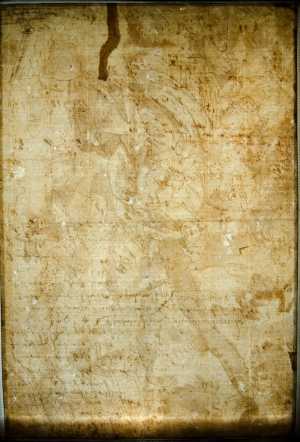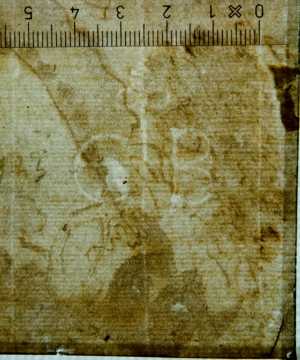Specifications
| Title | Rest on the Flight into Egypt |
|---|---|
| Material and technique | Pen and brown ink, brown wash (recto and verso) |
| Object type |
Drawing
> Two-dimensional object
> Art object
|
| Location | This object is in storage |
| Dimensions |
Height 309 mm Width 211 mm |
|---|---|
| Artists |
Copy after:
Paolo Veronese (Paolo Caliari)
Previously attributed: Benedetto Caliari |
| Accession number | I 408 recto (PK) |
| Credits | Loan Stichting Museum Boijmans Van Beuningen (former Koenigs collection), 1940 |
| Department | Drawings & Prints |
| Acquisition date | 1940 |
| Creation date | in circa 1572-1573 |
| Watermark | Letters GB surmounted by a trefoil (30 x 30 mm, top left corner, on P2 of 8P, vH), probably countermark of an Angel-type watermark, compare f.i. Briquet 631 and 660 |
| Inscriptions | 'Paul Veronese / (le tableau esta Dresde.) / avec autographe au [...]' (verso, lower left, pen and brown ink), various calculations (verso, pen and brown ink), '32' (on removed fragment, squared) |
| Collector | Collector / Franz Koenigs |
| Provenance | Frédéric Villot (1809-1875, L.996)***, Paris; - ; Art dealer Julius W. Böhler (1883-1966), Lucerne; Franz W. Koenigs (1881-1941, L.1023a), Haarlem, acquired in 1929 (Paolo Veronese); D.G. van Beuningen (1877-1955), Rotterdam, acquired with the Koenigs Collection in 1940 and donated to Stichting Museum Boijmans Van Beuningen |
| Exhibitions | Rotterdam 2010 (coll 2 kw 7); Verona 2014, no. 5.2b (as ‘Bottega di Paolo Veronese (Benedetto Caliari?)') |
| Internal exhibitions |
De Collectie Twee - wissel VII, Prenten & Tekeningen (2010) |
| Research |
Show research Italian Drawings 1400-1600 |
| Literature | Cocke 1973, pp. 145, 149 n. 48, pl. 13 (Benedetto Caliari); Pignatti 1976, under no. 320, pl. 686 ('forse di Benedetto'); Cocke 1984, no. 212, ill. r+v (rejected as Veronese; copy by 'school' and potentially Benedetto); Stephen Gritt in Sarasota 2012, p. 227, fig. 76 ('Workshop of Paolo Veronese (possibly Benedetto Caliari'); Verona 2014, no. 5.2b, ill.; Frankfurt 2019, p. 68, under no. 12, fig. 32 (workshop of Paolo Veronese, c. 1572-73) |
| Material | |
| Object | |
| Technique |
Washing
> Wash
> Drawing technique
> Technique
> Material and technique
Washing
> Wash
> Drawing technique
> Technique
> Material and technique
|
| Geographical origin | Italy > Southern Europe > Europe |
Do you have corrections or additional information about this work? Please, send us a message


























